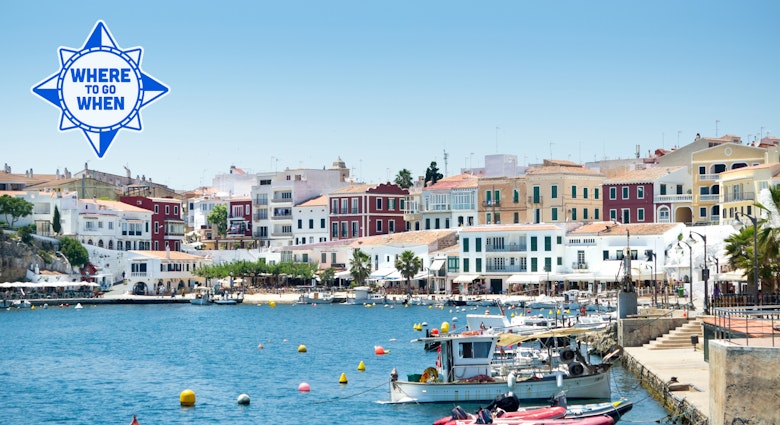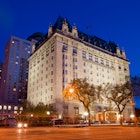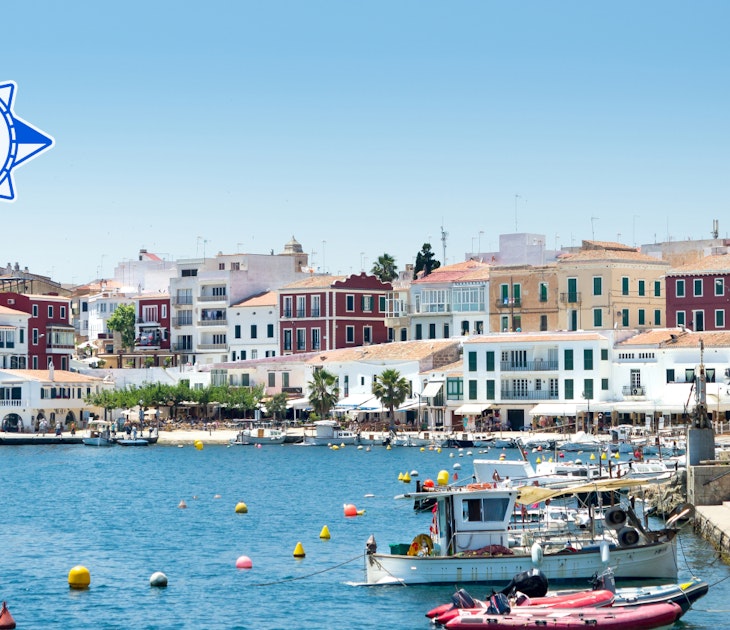
Travelling the Golden Route on Japan's Tokaido Shinkansen

Mar 2, 2020 • 5 min read

Iconic sights like Mount Fuji reveal themselves along Japan's Golden Route. DoctorEgg / Getty Images
Japan's personality comes to life along its famous Golden Route, the nation’s cultural epicenter. From the breakneck metropolis of Tokyo to spiritual icon Mount Fuji, through the ancient capital of Kyoto and culminating at brash, calorie-filled Osaka, the Tokaido Shinkansen is an exciting and incredibly convenient way to travel through the Land of the Rising Sun.
The Tokaido Shinkansen
Japan’s expansive rail system dissects the country with arterial routes running from the tips of northern Hokkaido and southern Kyūshū, funneling toward the beating heart of Tokyo. The Shinkansen, or ‘bullet train’, is Japan’s transport gold-standard. Built to increase transport capacity in Japan – and opened the year of the 1964 Olympics – the Tokaido Shinkansen has become its most frequented high-speed rail line, shipping passengers along key travel routes in Japan’s urban belt, dominating the mid-section of Honshu from Tokyo to Shin-Osaka Stations, which lie about 345 miles apart.

For first-timers, 10 to 14 days is usually recommended along the Golden Route. Here are the spots you shouldn't miss.
Tokyo (Stops: Tokyo Station)
Due to its sheer immensity, it’s better to explore Tokyo through its neighborhoods, rather than pinpointing individual sights. Nestled by the eastern edge of the sprawling Yoyogi Park, Omotesando is a good place to start. Take a walk along its glamorous highstreet, home to the capital’s most daring neo-modern architecture, before pausing at Commune 2nd for Erdingers and karage (battered chicken thighs) in an LA food truck-style setting.
Akihabara is to pop culture what Hollywood is to movies. Even if you have only a cursory interest in Japanese anime, manga (comics) and video games, this fun-fair-like district captures the essence of Japan’s childlike eccentricity. Akihabara’s ramen scene is equally vibrant: Hit up Torioh Keisuke for chicken bone ramen and tea-smoke eggs, Furyu for doughy noodles in Hakata-style tonkotsu broth, or Kikanbo for pork belly ramen with a spicy, tongue-shredding soup.

For a view of Tokyo’s new wave hipster culture, Shimokitazawa is full of craft coffee, a thriving arts scene, thrift shops and vinyl LP stores. Good Heavens pub is a must for fans of Stand-Up comedy.
And you can’t go to Tokyo without visiting Shinjuku and Shibuya. Hanbey is a charming Showa Era izakaya (gastro pub) in Shinjuku, serving delicious, wartime sharing bites to the period-style backdrop of scratchy gramophone music. For movie buffs, take a dive into the Udagawacho, Shibuya Karaoke Kan, where Bill Murray belted out a classic rendition of ‘More Than This’ in Sofia Copolla’s 2004 film, Lost in Translation.
Shizuoka (Stops: Atami and Shin-Fuji Stations)
Shizuoka Prefecture is home to the grand empress of Japan’s towering volcanic peaks, Mount Fuji (serviced by Tokaido stop, Shin-Fuji Station), and has undeniably the most stunning natural reserves along the Golden Route. During the summer hiking season, summiting Fuji is a must. It’s a surprisingly scalable peak for a mountain that soars over 3700 meters into the heavens, and is conveniently provisioned with lodgings and well-worn walking trails.
Be sure to check out the Izu Peninsula (easiest access from Atami Station), which hangs from mainland Shizuoka like the head of a giant serpent. Along it’s craggy, palm-flanked seaboard are some of Japan’s top scuba diving and surf spots. For gastronomic pleasures, the towns in east Izu – Ito, Atami, Higashiizu – are overflowing with top-drawer seafood, and Shizuoka’s wasabi radish is the most highly sought-after in all of Japan.

Kyoto (Stops: Kyoto Station)
Kyoto is seen as the yin to Tokyo’s yang; the historical antidote to the fizzing modern capital. It avoided the bombing atrocities of World War II, leaving it with the largest congregation of preserved religious monuments in the country, including 17 Unesco World Heritage Sites.
Though Kyoto has taken on a distinctly postmodern aesthetic in the 21st century, over 1600 temples and shrines still dot the city. Fushimi Inari, Kiyomizudera Temple and Kinkaku-ji top most visitors’ to-do lists. For crowd-weary travellers however, Sanjusangendo Temple, harboring 1001 intricate cypress carvings of Kannon, is a slightly quieter alternative. Or you can head to Nanzen-ji temple for a vegetarian repast of shojin ryori, Zen Buddhist cuisine.
Be sure to take a stroll through flagstone streets of Gion, Kyoto’s geisha district and the setting of Arthur Golden’s divisive historical novel Memoirs of a Geisha. Banking the placid waters of the Kamo River, Gion is a charming matrix of traditional architectural facades and centuries-old tea houses. Recently a resident-enforced photo ban was implemented here, resulting in a quicker and less-congested flow of tourists.

Osaka (Stops: Shin-Osaka Station)
Osaka is Japan’s soul food capital, and eat here you must. It’s not uncommon for Osakaites to bounce between several izakaya in one night, restaurant-hopping the way those in the West may do with bars.
Dontobori canal is the pullulating core of Osaka, luring passersby with its rainbow-dappled buildings, saliva-inducing aromas and bustling street food stalls. Takoyaki (doughy octopus balls) and sizzling skewers dominate the fare along the canal’s lengthy promenades. Okonomiyaki (a floury omelette/pancake) is another local specialty. Michelin-recognized okonomiyaki house, Mizuno, is often touted as the best in the city (ergo the best in the nation), though lengthy waiting times are guaranteed.
For some local culture, there’s a replica Edo-period Castle. It’s not quite as impressive as Japan’s original feudal structures, but offers sweeping city views from its upper chamber, and neatly manicured gardens at its base.
Tokaido Shinkansen Train Tips
There are three categories of Tokaido Shinkansen: Nozomi (fastest; least stops), Hikari (fastest available for JR Pass holders), Kodama (slowest; most stops). The Nozomi services Tokyo, Kyoto and Shin-Osaka Stations. For Atami Station – Hikari, Kodoma – for Shin-Fuji Station – Kodama only.
If you want to save money on lodging and flights, while circumventing tourist hordes, consider travelling the Golden Route off peak season: June to July, or December to mid-March (minus the New Year holiday in January).
Tokaido Shinkansen users should also beware of the new oversized baggage rule (for bags over 160cm), taking effect May 2020. And for quick seat reservations, check out the Tokaido Sanyo Shinkansen Online Reservation Service.
You might also like:
6 things you need to know before travelling to Japan right now
Top 20 free things to do in Tokyo
The best Kyoto restaurants to try traditional Japanese food
Produced by Lonely Planet for Central Japan Railway Company. All editorial views are those of Lonely Planet alone and reflect our policy of editorial independence and impartiality.
Explore related stories








 HistoryTokyo art collective is bringing its popular light installations to Europe
HistoryTokyo art collective is bringing its popular light installations to EuropeSep 1, 2020 • 2 min read

